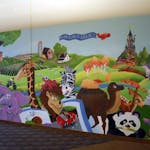The Southwest light-rail line may be mired in financial uncertainty, but the next LRT project in the works took a key step forward Friday with the release of the final environmental review for the Bottineau Blue Line extension from Minneapolis to Brooklyn Park.
The Metropolitan Council and Federal Transit Administration, partners in the $1.54 billion project, have published the nearly 8,000-page blueprint for the line detailing environment-related adjustments that need to be made, said Kathryn O'Brien, Metro Transit's assistant director of environmental and agreements.
None is seen as a game-changer for the project.
The study "is an important momentum builder," said Met Council Chairman Adam Duininck. "It shows that, even though Southwest has been a challenging project in some fronts, other [transit] projects around the region continue to enjoy broad support."
Southwest has faced more opposition, delays and funding challenges, and its future is uncertain.
Meanwhile, the Bottineau line is slated to open in 2021.
One of the primary concerns raised in the study is the impact of noise along the line, which traverses north Minneapolis, Golden Valley, Robbinsdale, Crystal and Brooklyn Park. LRT trains would share right of way with BNSF Railway trains along eight miles of the 11-mile route and would run every 10 minutes during peak hours.
Most of the noise would occur as LRT trains sound their horns at at-grade crossings shared with the freight trains. The study identifies eight "quiet zones" where train operators would refrain from sounding their horns at street crossings. Other safety improvements were added instead, including street modifications, enhanced median barriers and gates.
Horns would be used only during emergencies in these areas, the study said. Another kind of signal, called a wayside horn, would be mounted at certain crossings to alert motorists and pedestrians to oncoming trains.
The Met Council said it will continue noise testing and provide "appropriate mitigation."
The study highlighted the potential for excessive vibration, particularly in residential areas of Robbinsdale and Crystal.
The council said it would fix those problems by installing 1,300 feet of ballast mat, a kind of buffer, under the tracks and rocky ballast in three locations.
The project's pathway from Olson Hwy. in Minneapolis north to 36th Avenue in Robbinsdale is dotted with more than 13 acres of wetlands.
The report says avoiding these areas is "not feasible" but notes the plan would elevate tracks over the Grimes Pond/North Rice Pond area and ponds near Golden Valley.
The study also identified 271 parcels of potential environmental contamination; 24 have a "high potential" for contamination and 135 have "medium" potential. The council will begin more in-depth testing this summer.
Last week, the Blue Line's Corridor Management Committee, an advisory group, learned the cost of the Bottineau line crept up 2 percent to $1.54 billion. It is being funded through local sources, including the Counties Transit Improvement Board, Hennepin County and its Regional Railroad Authority, the state, the Minnesota Department of Transportation and Brooklyn Park. Once local funding covers 51 percent, the FTA kicks in 49 percent, or $753 million.
The public has until Aug. 15 to comment on the environmental plan. More information is available at www.bluelineext.org.
Janet Moore • 612-673-7752
